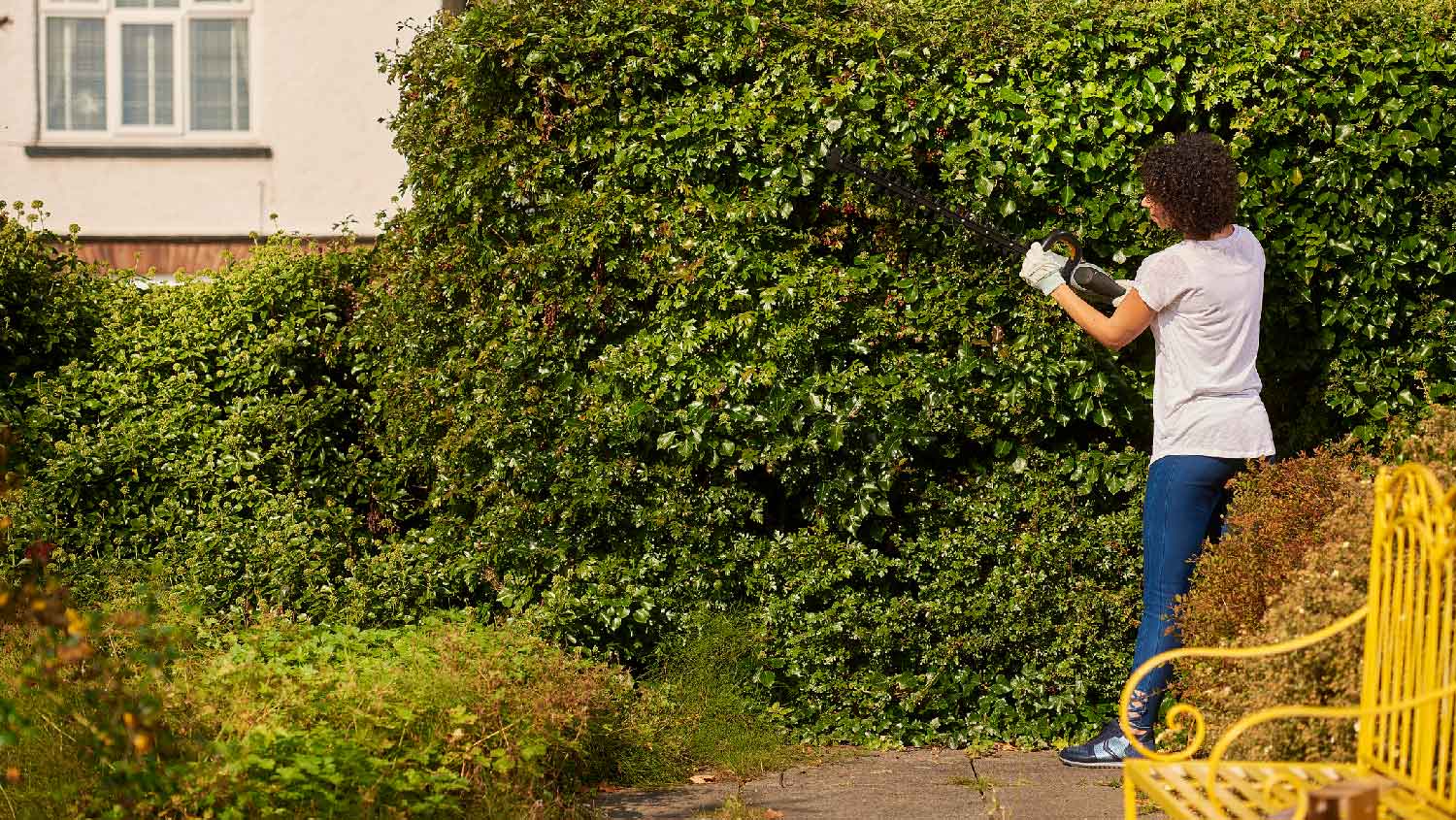
Xeriscape costs depend on materials, the size of your yard, and if you DIY. This guide will help you determine what your xeriscaping project will cost.
Your dying bush may not need a miracle, just a pro


If you notice shrubbery struggling to grow in your yard, you may wonder who to call to revive a bush and restore it to its previously healthy status. Yellowing leaves, dried branches, and bare spots are often signs that something is amiss with the plant's health, and it's likely time to hire a professional. Knowing who to call to revive a bush as early as possible can be the difference between its life and death.
Finding a specialist who can revive a bush can take more effort than finding someone who simply knows how to trim bushes. One of the most crucial steps to revising a bush is diagnosing its problem. That skill requires knowledge and training—The kind that professional local landscapers are likely to possess.
A landscaping pro will likely be as passionate as you are about saving your beloved bush. However, keep in mind that these plants don't last forever, and sometimes, the best action is to remove them. Either way, a well-qualified professional will know best, and can help you determine the recommended course of action to bring the bush back to life and start implementing the solution.
If you have other landscaping needs, including those items in your search doesn't hurt. For instance, ask about tree removal costs if necessary while they're doctoring your bush back into shape. To identify a professional bush revival specialist who can help your troubled bush, start by talking with friends and neighbors about their experience with companies in similar situations. Check online reviews and company websites for additional information about a professional you are considering for the job.
There are plenty of tips and tricks you can use to restore your bushes to their former glory. The first step is ensuring the care and maintenance methods are appropriate for the type of bush you have. For example, caring for rose bushes differs from maintaining blueberry bushes.
Follow these guidelines for reviving a dying bush:
Prune away any dead limbs
Water thoroughly during the growing period
Let flowers bloom before pruning branches
Determine whether you’re over or under watering and then course correct

Although we recommend hiring a professional landscaper to help revive a struggling bush in your yard, you can also consider hiring an arborist. However, keep in mind that arborists specialize in caring for trees, but some practitioners may have experience diagnosing issues with sick or dying bushes, too.
The specialist you hire to help revive your bush must have adequate qualifications, such as a license and business insurance. However, asking about special training and certifications can help you feel more confident in your hiring decision. Ask for local references and make the calls to ask about other customers' bush experiences with the company.
Here are some other qualifying questions to ask your potential bush saver.
What industry-specific certifications do you carry, and what is the significance of each?
How many years have you been in business?
What is the bush diagnosis and treatment plan?
What is your success rate with saving bushes in this condition?
What is the total project cost?
Can you provide a complete description of the work, including the cleanup process?
What are your contingency provisions if the bush is beyond saving after work starts?
Although each bush will require different steps to rejuvenate it, your landscaping pro will likely follow these guidelines to revive your shrubbery:
Use shears to remove the dead heads at the healthy part of the branch
Remove diseased branches and leaves
Water the plant well
Inspect for signs of pests
Re-fertilize if necessary
Bushes are living organisms that grow and change over time. While it's safe now that a professional landscaper is on the case, it's still vulnerable to everything nature can throw at it. Talk to your arborist or landscaper about aftercare needs and, if necessary, re-acquaint yourself with its basic care needs, like when to trim bushes or the best watering practices to give your bush the best chance to thrive.
From average costs to expert advice, get all the answers you need to get your job done.

Xeriscape costs depend on materials, the size of your yard, and if you DIY. This guide will help you determine what your xeriscaping project will cost.

Railroad tie retaining wall costs can vary widely, so getting an accurate estimate for your needs is a good idea to set your budget appropriately.

Growing plants with a hydroponic gardening water system can be a big investment. To know how much it costs to build a hydroponic garden, consider the system, technology, size, and whether you hire a pro. This guide will help calculate costs.

Shrubs come in a huge array of shapes and colors. Here are 25 beautiful and low-maintenance types of shrubs to consider for your landscape.

Do you tip landscapers? Talking about tipping is often seen as a taboo, but there are a lot of nuances to getting the numbers right. This guide can help.

Regrading around your foundation can help prevent water damage to your home. Learn how to build up soil around the house foundation for better drainage.